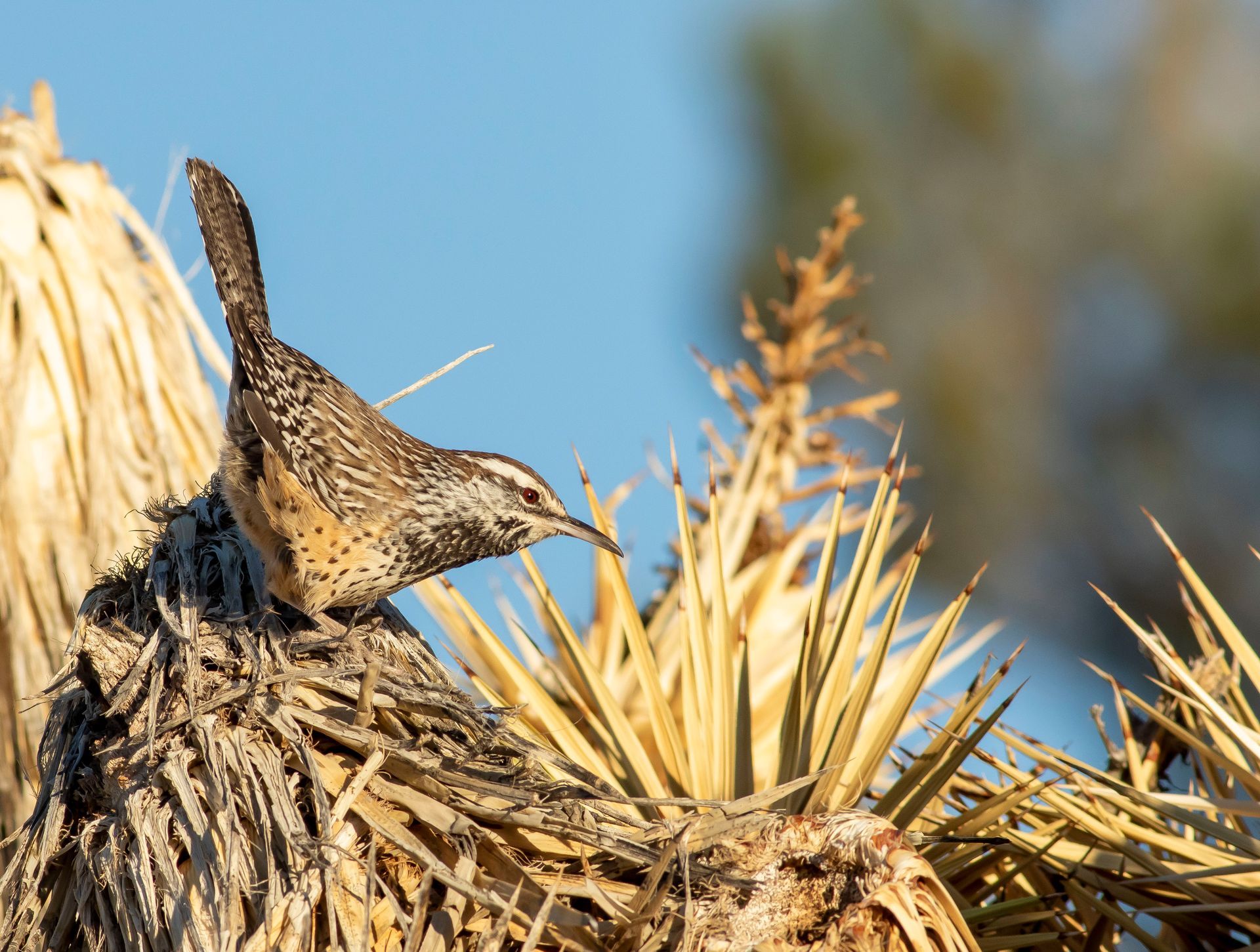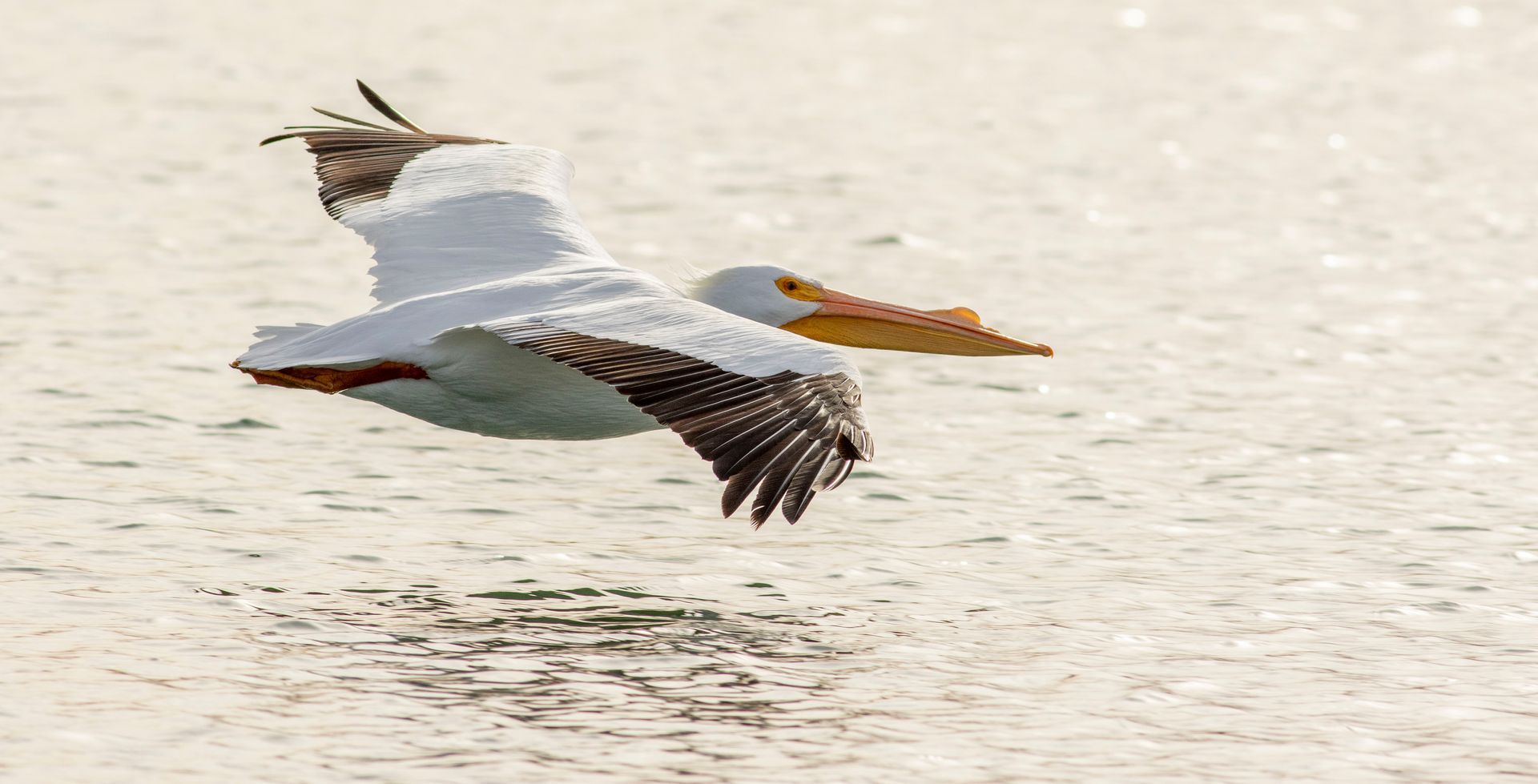July Birding Forecast

By Alex Harper
Monsoon season began in mid-June and will go until late September throughout the Mojave Desert. Monsoonal weather patterns are kicked off as warm, moist air is moved into the region by winds originating in the Pacific Ocean and the Gulf of California. When moisture builds and the conditions are right, thunderstorms and thick cumulus clouds begin to move through southern Nevada. Occasionally, the clouds will release water in the form of precipitation, providing the living organisms with much-needed moisture and cooler temperatures.
The pulses of moisture may stimulate insect activity and population growth. This in turn can increase bird activity. In wetter years, cicadas or grasshoppers can be abundant in the Las Vegas Valley. These large insects are important food sources for the many young birds in the area and can help them survive the most challenging parts of their lives: learning to find food without the help of their parents. You may see neighborhood mockingbirds and grackles feeding on grasshoppers, or roadrunners at larger parks chasing them with high levels of success.
Whether or not the monsoons materialize in July, the month tends to be hot and on the slower side throughout the Valley for birds and birders. However, there are bright spots for those willing to brave the heat. Many shorebirds may already be migrating through the area. Shorebirds are some of the first migratory birds to return to the area during southbound migration; their numbers will continue to grow through August and into September. The first birds may be plains breeders such Long-billed Curlews, Willets, and Wilson’s Phalaropes, followed by shorebirds from the boreal forests and Arctic tundra. They are often made up of adult birds that have not bred successfully and have begun moving towards wintering areas, followed by successfully-breeding adults, and later the young birds born and fledged this summer. Look for shorebirds at Henderson Bird Viewing Preserve, the Las Vegas Wash, and flooding lake beds.
Another interesting phenomenon is the movement of some species of waterbirds from Mexico into areas of the desert southwest. In July and August, the Las Vegas area may be graced by unusually occurring wading birds: White Ibis, Roseate Spoonbill, Reddish Egret, Little Blue Heron and Yellow-crowned Night-Heron are all species that could show up at wetlands. These are probably young birds born this summer that are dispersing, possibly following the Colorado River up from Mexico and into southern Nevada. It seems that at least one or two of these species will be turned up by birders during July and August.
Birders can escape the heat by heading into the Spring Mountains. By July, many of the high elevation birds have raised young, and breeding activity has slowed. Although birds are less vocal and active, they are still present in these habitats. It won’t be until August that most migratory birds from the Mojave and Great Basin mountain ranges begin to move down into the lowlands, where the risk of encountering high heat and less food, cover and water negates the advantages of getting any head start on southbound movements. The exceptions are hummingbirds; Rufous and occasionally Calliope Hummingbirds will turn up starting in late July at higher elevations. These birds leapfrog across mountain ranges in search of the late summer blooms of penstemon, goldenrod, thistle, and more.
RECENT ARTICLES



